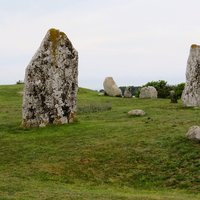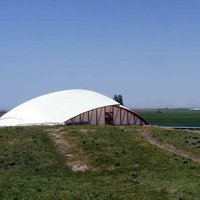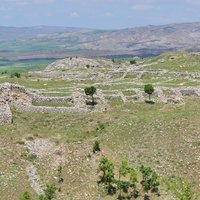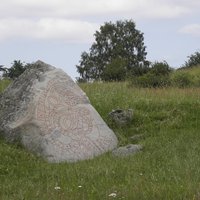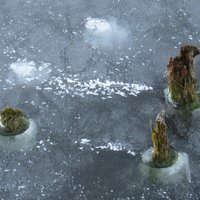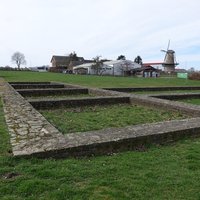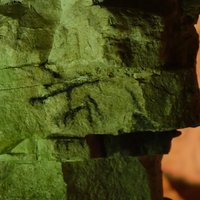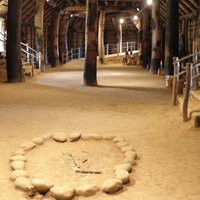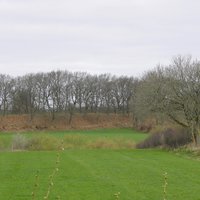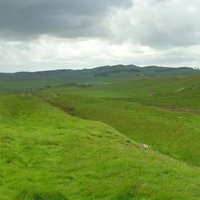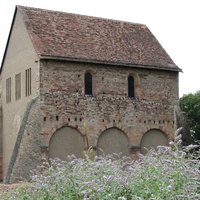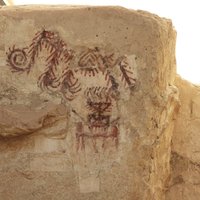Connected Sites
-
-
One of the more recent structures on the site is the experimental reconstruction house which was constructed between 1999 and 2002 .......The house does not replicate one specific excavated building but is an amalgam of a number of features common to the Neolithic buildings of Çatalhöyük such as platforms, ovens and wall paintings. The original aim of the house was as a research tool to investigate the building techniques used at Çatalhöyük. Experiments such as painting on the lime plaster walls, and building and lighting a hearth take place inside the house. Furthermore it is a very effective interpretative and especially educational tool. The construction of the house provides the archaeologists and visitors with a physical experience of what it might have been like to live at Çatalhöyük, in terms of space, movement and light. The house complies with all aspects of the ICOMOS Charter for the Protection and Management of Archaeological Heritage (1990), Article 7 on archaeological reconstructions" (Man Plan)
-
-
-
"At Trelleborg and Fyrkat, outside the boundaries of the nominated property (outside the then scheduled protected areas), reconstructions of longhouses of the so-called ‘Trelleborg-type’ were built for the purposes of experimental archaeology and interpretation – extensively informed by archaeological evidence revealed in excavations" (Nom file)
-
Prehistoric Pile Dwellings
Austria, France, Germany, Italy, Slovenia, SwitzerlandInscribed: 201125817 -
"The LVR-Archaeological Park Xanten (...) was created in 1973 to protect the remains of the Roman town, which were threatened by quarrying and industrial development. (...). The park visualises the scale and outward appearance of a Roman town in a part of the Empire which has only very few aboveground remains of Roman buildings. It increasingly serves as a laboratory for Roman construction techniques, providing many new insights through a process of experimental archaeology, learning-by-doing." (Nomination file, p. 118)
-
There is an "interpretive reconstruction of a Neolithic village", which offers, among other things, an "Interpretive reconstruction in a niche-gallery mine". "(...) one can find both reconstructions of houses from the Funnel Beaker culture and the Globular Amphora culture, dating back to the 4th and 3rd millennium BCE, as well as from the Mierzanowice culture from the early Bronze Age (the three principal communities associated with Krzemionki striped flint mining)." (Nomination file, p. 292, 297)
-
"In some cases, local authorities have developed life-size interpretive models of some key features, especially pit dwellings and shell middens. These models are intended to help explain to visitors some of the authentic elements that are otherwise concealed under a protective layer of soil. While the life-size models are presented as replicas, not reconstructions, and constructed so as not to have any impact on the archaeological deposits, new technologies are nevertheless explored to help visitors visualize some of the authentic archaeological features that must remain buried." (Official description)
-
-
Saalburg (large parts of a Roman Castellum reconstructed on the original spot, showing how the Roman army was organised and how Romans constructed their buildings)
See exarc.net
-
Carnuntum: "Reconstructions have been erected using experimental archaeology. Building work was able to be carried out partly with original Roman stonework and with reconstructed Roman tools using ancient building technology and craft skills. All technical facilities in the buildings are fully functioning."
See www.carnuntum.at
-
-
An experimental 1:1 replica of an Arslantepe Early Bronze Age mud-brick house, has (...) been built in 2010 in the entrance area. The original aim of reconstructing this house was to investigate, and at the same time, exhibit the old mud-brick architecture techniques, and show to local modern inhabitants how their traditional houses have not changed for millennia. This should further help bridge the past with the present as well as being a very effective educational tool for the preservation of traditional cultural heritage. (Nomination text, p. 106)


